Paul Whalen is one of the most influential New York architects whom many of those outside the industry have never heard of. But there’s a good reason for that: He works for his former teacher — the famed Robert A.M. Stern — who’s the founder and face of Robert A.M. Stern Architects. Behind the scenes, however, Whalen has been a lead designer on some of the city’s most celebrated residential buildings, including 15 Central Park West, 18 Gramercy Park and a slew of others. In total, he’s designed a dozen New York buildings since graduating from Princeton University in 1981 with his master’s in architecture and joining RAMSA full time. (He also interned at the firm in the late 1970s). “In 1976, there were 10 people here,” said Whalen, one of the firm’s longest-serving partners, noting that today there are 325 architects, interior designers, landscape designers and support staff. Whalen’s geographically “complicated” upbringing included traveling in South America with his parents (his mother is Chilean and his father is from Minnesota) and living in Orlando and Cheyenne, Wyoming. Today, he’s designing the classic-looking urban apartment houses that have become synonymous with RAMSA. And he and some of the firm’s other top partners have recently stepped into the spotlight, co-authoring a coffee-table tome with Stern on their designs in New York City and beyond.
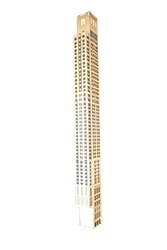 Building models
Building models
Whalen’s office is littered with models of existing projects, as well as those “that died a fiery death.” The largest model is of the Zeckendorf’s under-construction 520 Park Avenue. “We made this model to study the addition of these balconies.” The firm, he said, varies unit layouts in high-priced residential buildings because otherwise “an apartment can seem not very special.”
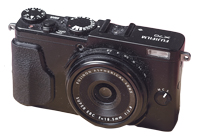 Fujifilm camera
Fujifilm camera
Anyone who follows Whalen’s active Instagram account knows he regularly posts building shots. “I love to take pictures of buildings everywhere I go.” In fact, he often spots design elements during his travels that find their way into his work — with a twist. “I loved discovering all the alterations [architect Joe] Plecnik did to the Prague Castle. There are so many wonderful ideas that I’ve taken from there.”
Tracing paper and Sharpie
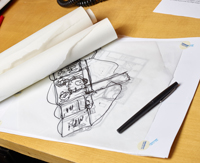 Whalen, who is 60, said he belongs to the last generation of architects who can get by without using AutoCAD, the industry’s standard drafting and modeling software. “I did all my work drafting, using triangles and pencils.” Recently, when a member of his team brought him a digital building rendering for a project the firm is designing in Hong Kong, he pulled out tracing paper and “did a sketch right over the top of it” with his alterations.
Whalen, who is 60, said he belongs to the last generation of architects who can get by without using AutoCAD, the industry’s standard drafting and modeling software. “I did all my work drafting, using triangles and pencils.” Recently, when a member of his team brought him a digital building rendering for a project the firm is designing in Hong Kong, he pulled out tracing paper and “did a sketch right over the top of it” with his alterations.
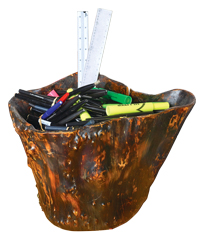 Wooden bowl
Wooden bowl
This bowl, originally used for flower arrangements, is now filled with markers, highlighters and red pens, which are used for sketches and making revisions to contracts and proposals. “Everyone around here knows that it’s here,” Whalen said. “It’s like the village well that they can go to, to get magic markers.”
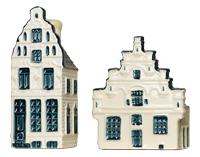 Dutch houses
Dutch houses
These ceramic, gin-filled liquor bottles (in the shape of mini homes) are given out in business class on Air France–KLM flights to Holland. “If you fly enough on KLM, you can own the whole street,” said Whalen, who’s taken a number of trips to the Netherlands, where RAMSA has had business for decades. In 2006, the firm completed an award-winning 452,000-square-foot retail-and-residential project in the city of Arnhem. And it designed a retail building called Damrak 70 in Amsterdam, which is due to open this year.
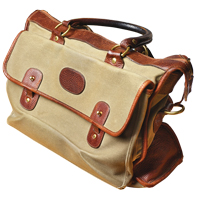 Ghurka bag
Ghurka bag
Whalen has been buying this classic satchel-style Ghurka bag for years. “I wear them into the ground and then get another one.” A broken brass zipper suggested Whalen might be due for a new one soon. But they are not cheap. “They’re too expensive, more expensive than they look.” The company has discontinued this particular model, but a similar bag on the Ghurka website retails for $1,195.
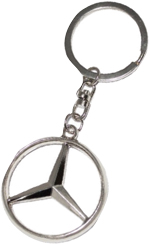 Mercedes E350 station wagon
Mercedes E350 station wagon
RAMSA’s Far West Side office “used to be out here in the middle of nowhere,” Whalen said, noting that “now you see Hudson Yards being built up by Related — a client of ours.” All of the development has had one downside for Whalen: It’s created parking problems. The garages near his office have largely been demolished to make way for new towers. “I’ve lost my parking space three times and now keep my car in a garage Downtown,” said Whalen.
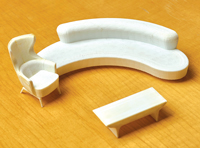 Tiny furniture
Tiny furniture
This miniature furniture was made with the firm’s 3-D digital printer and was meant for the recently scrapped condo and hotel conversion of the former Sony Building, which was planned by the Chetrit Group and Clipper Equity. Whalen called his profession “a canary in the coal mine,” because it’s one of the first to feel a downturn. The Sony Building conversion “would have been a great building, but our clients became concerned about the upper levels of the condo market in New York and someone offered them a lot of money.”
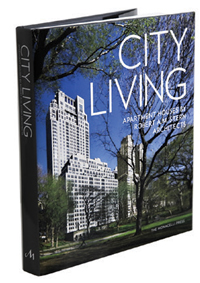 “City Living”
“City Living”
Whalen recently co-authored “City Living: Apartment Houses by Robert A.M. Stern Architects” with his boss and RAMSA partners Daniel Lobitz and Michael D. Jones. The 360-page oversize book takes stock of the firm’s body of work. “Principles we rely on every day but perhaps don’t verbalize became clearer to us through the writing process.”
